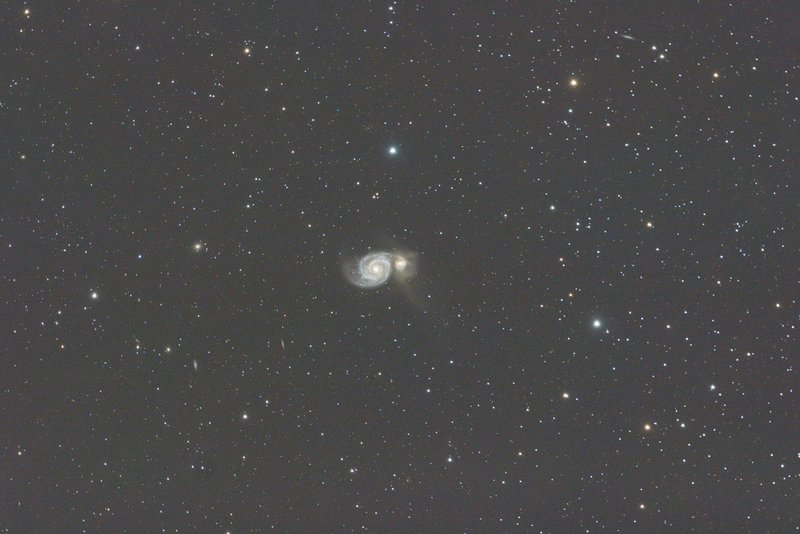
M51 (Whirlpool Galaxy) Stack of 9. Shot 5/11/16 ISO 1600 @ 240 seconds. Color saturation is enhanced, but hue is unchanged. I counted 8 galaxies in this photo.
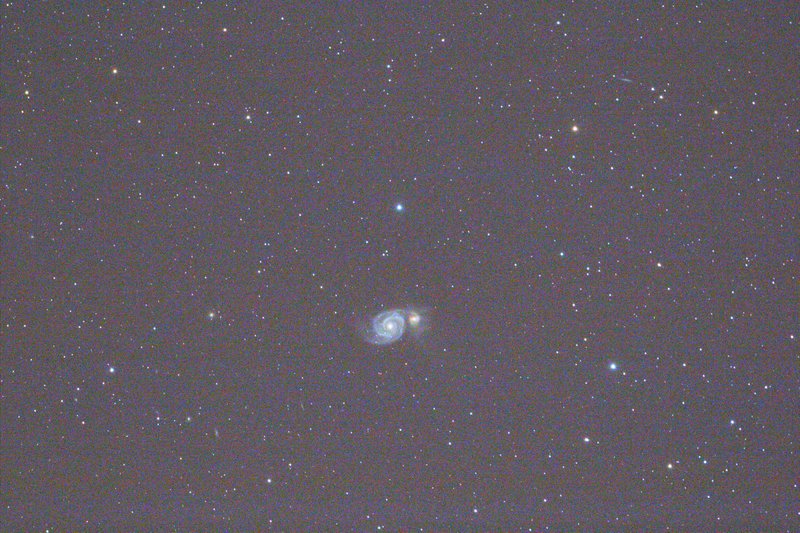
M51 (Whirlpool Galaxy) Single exposure. Shot 7/7/16 ISO 6400 @ 60 seconds. Color saturation is enhanced, but hue unchanged.
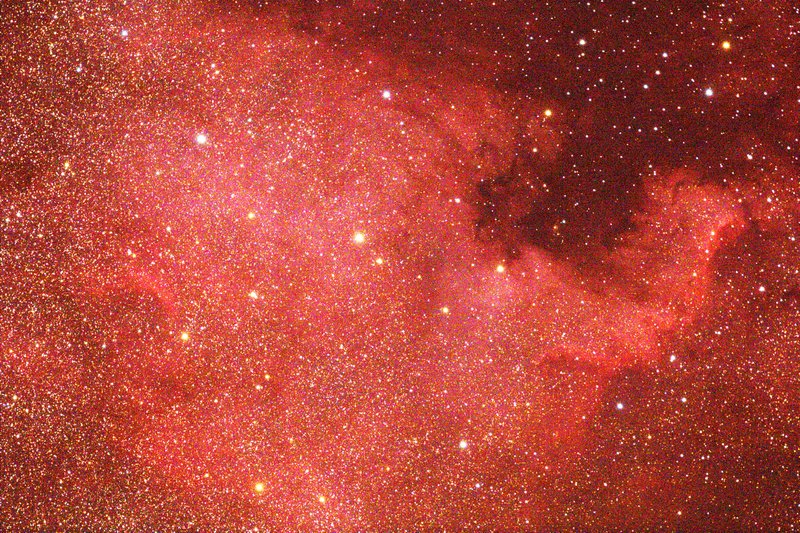
NGC 7000 (North America Nebula) Single exposure. Shot 7/7/16 ISO 6400 @ 60 seconds. Color saturation is enhanced, but hue unchanged.

M20 (Trifid) and M8(Lagoon) Stack of 9 @ 240s @ ISO1600 shot 7/6/16, and stack of 9 @ 120s @1600 shot 7/22/15. Color saturation enhanced, but hue unchanged. The pink parts of the nebulae are emission nebulae. They fluoresce in the ultra violet light of their central stars. The blue nebulae in the Trifid is a reflection nebula. It is reflecting white light, and is blue because it's small particles reflect blue (short wavelengths) more efficiently than the longer wavelengths. This is also why the sky is blue. The dark veins in the Trifid are actually between us and the Trifid, and are a dark nebula (Barnard 85).
E-mail and photos from Hilton on 03 July 2016
This is my first spotless photo. Solar viewing is a lot less interesting than last year. The attached PDF makes the spotlessness official.
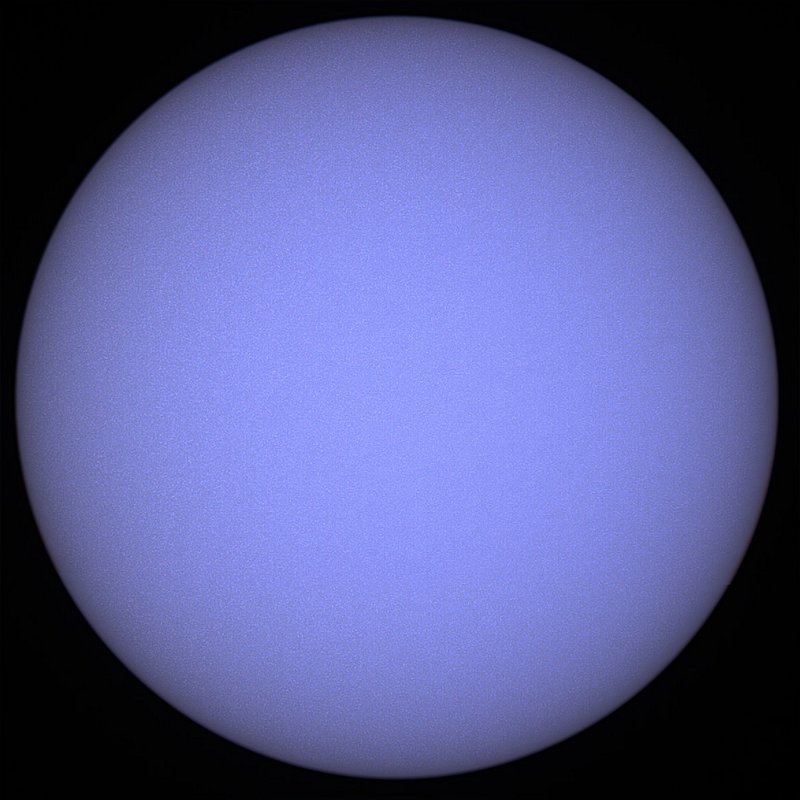
The sun viewed in white light today. The bluish cast is from the filter.
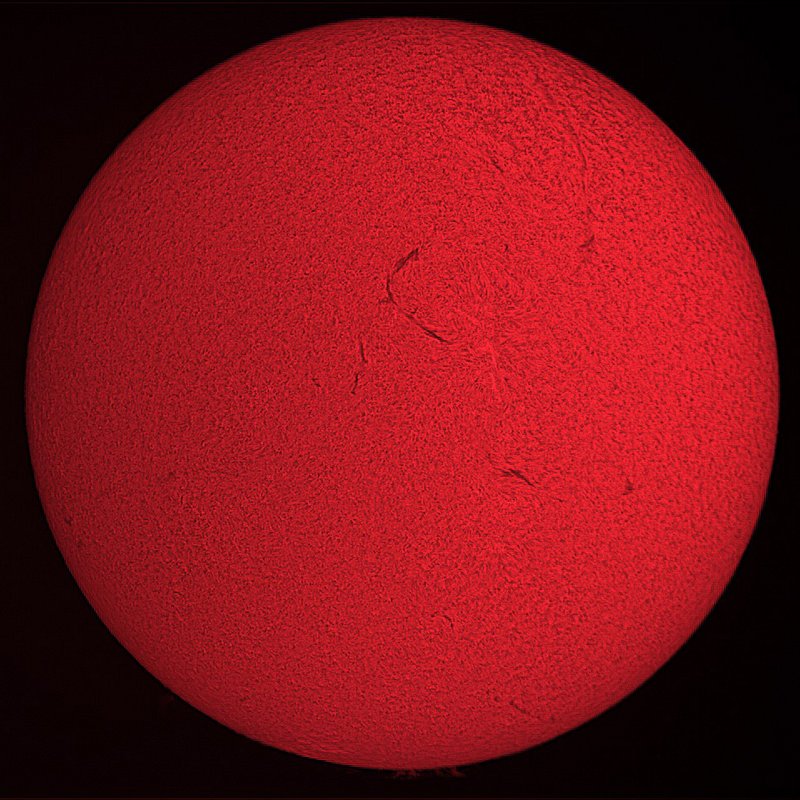
The sun in Hydrogen Alpha red today. Lots less action than on previous photos.
I think lack of spots correlates to calmer space weather, less northern lights, and fewer problems for Canadian electrical grids.
Roice, regarding science camp:
As I said above, solar is likely underwhelming. Is there any interest?
Re. Astronomy: Twilight ends around 10:30. How does darkness correlate to your pupils' bedtimes?
Re. Telescopes: My refractor is a wide field scope, so it's good for large objects like big nebulae. (Nebulae are best viewed after the end of twilight.)
Ray's scope, with it's longer focal length, will do a much better job on star clusters like M13, which he showed us last week.
My big dob isn't an option because it needs a flat area about 12 feet in diameter to permit chair and step stool access to the eyepiece. It also has significant setup and tear down time if it travels, but if your schedule permits, I'd be happy to set up for your gang some evening at my place.
I assume we'll be hearing from you on the 6th or 7th?
--
Hilton Long PO Box 1518 Parowan, UT 84761